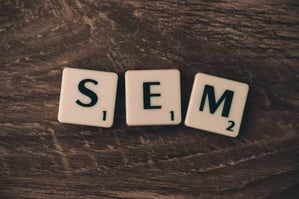
What is Google Ads?
Google Ads, formerly Google Adwords, is an advertising platform released by Google on October 23, 2000. Google's search engine is the main platform for its search ads network. Google Ads account for more than 90% of Google's global revenue, even today.
Google Ads is a way to rank on the search engine result page (SERP) allowing you to reach the customers you want with a defined budget.
This instantaneous means of generating traffic can quickly become costly when no strategic thought is given priorly.
Paid Media
First of all, you should understand that Google Ads is in the field of media buying, advertising placement. To fully understand this principle and its application in digital technology, it is necessary to understand the related principles.
An owned media is a property of the company. It can be a website, blog or other web entity that you control, such as a profile in a social network.
Earned media or organic media are content that travels organically on the Web based on its popularity and intrinsic value, such as social media reviews, articles, and comments. It is possible to use levers to promote this type of media, but it’s in the field of public relations, community management, and communications.
Media buying is closer to traditional marketing, where you pay a third party to deliver your message to a given audience.
Although some media are categorized, others offer a multitude of options to target an audience.
The field of digital advertising placement requires certain elements to function correctly. On this post we focus on a single media, Google Ads, and its formats.
Bidding
There are two ways to buy advertising space: auction and negotiation. On Google Ads, it's the auction.
The auction is the most democratic model and the closest to the principle of supply and demand. The more advertisers there are on a keyword or a given audience, the more expensive it is.
In most cases, the bidding is done per click (i.e., the cost per click or CPC) and paid on every click.
There are different auction models. You may pay per number of views, per thousand impressions or action.
The CPC has many advantages, such as concrete and straightforward results with a very good control on your budget.
Formats
Google offers a multitude of advertising formats delivered over two main networks: Display and Google.
For Display, the capabilities represent about 90% of websites and applications with advertising locations on the Web.
For Google, it is possible to publish ads on the search results page, Gmail, Google Shopping and YouTube.
Interested in learning more?
Parkour3 offers Google Ads (Adwords) training for those who would like to know more about web marketing activation.
Have a project in mind?
Whether you need to structure your marketing efforts or boost your results, we’re ready to collaborate. Let’s talk about your goals!
.webp?width=254&height=134&name=Image%20(7).webp)
.webp?width=72&height=78&name=Vector%20(6).webp)
-1.webp?width=254&height=137&name=Ellipse%201%20(1)-1.webp)
